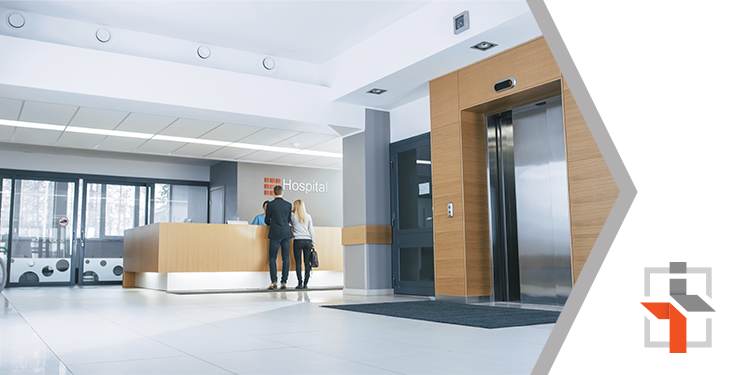Four Types of Clinical Environments
Every provider has a unique personality that shapes how you interact with patients, manage staff, and take care of your own professional needs. Understanding the pros and cons of each type of clinical environment for your work style and experience levels—from teaching hospitals to rural care clinics— can help you find the ideal working situation for you.
As a locum tenens physician or APP, you have the luxury of trial and error in finding which medical facility fits your personality and working style best. Below are four different types of medical facilities and the character types you resonate with.
1. Hospital
With over 6,000 hospitals in the United States, these establishments are leading employers of health professionals. Hospital employees can expect a rewarding, stimulating, and fulfilling career that positively impacts patients’ lives.
Hospitals are typically large medical institutions, with many services and patient cases at hand for each doctor or APP. These busy facilities take pride in your staff’s ability to multitask efficiently through patient visits, tests, procedures, and paperwork.
Providers working in hospitals have the opportunity and advantage of potentially working with the newest healthcare technology. This not only refreshes the skills you already have but also allows you to develop new skills to stay relevant in the constantly evolving world of medical technology.
Physicians and APPs in hospitals are cooperative workers, meaning that you enjoy working alongside a team but are not afraid to handle your own tasks. You’re versatile in your abilities.
Senior staff members mentor junior physicians and can offer advice regarding patients’ medical issues. This support system gives confidence to those in the initial stages of your career.
A potential downside with hospital work is that it requires round-the-clock coverage, including weekends and holidays. Working on-call shifts allow doctors to get involved in patient care while retaining personal time, although some may find a rotating shift pattern challenging.
2. Urgent Care Clinic
Urgent care facilities are an excellent option if you’re interested in learning more about the medical field or looking to build your experience before entering a larger clinical environment.
Urgent care centers generally have a lower volume of patients than hospitals, with a smaller, more closely-knit staff. These facilities suit physicians and APPs with the proximity work style as you enjoy independence but within a small enough setting to develop relationships with co-workers and patients. You can acclimatize yourself to managing your workspace while still having the regular support of experienced doctors and attending staff.
Physicians and APPs working in urgent care facilities are often encouraged to practice or try out new techniques. You have the flexibility in your schedule that allows for time to learn a specific skill set, such as prescribing medication, with close supervision by experienced physicians and staff when needed. However, those who work in an urgent care clinic are generally more independent than at hospitals.
3. Private Practice
Working in private practice provides a more regular and stable clinical environment than a hospital. You’ll have more control over your work and the skill set you develop. It suits people with a guardian working style.
These practices are usually less busy than hospitals, meaning you can generally take time off when needed, and you aren’t required to be present at the facility 24/7. It also means there’s more interaction with fellow staff members, so you can teach and share information.
The relationship with other staff members in private practice is typically more relaxed and less hierarchical, which may be off-putting to some people. You also tend to maintain closer and more long-term relationships with patients than at hospitals.
A significant advantage of private practice is a potential opportunity to work at multiple clinics within the same facility or community.
4. Ambulatory Surgical Center
Physicians and APPs who work in ambulatory clinics work closely with patients and often develop long-term relationships. People who work in ambulatory centers value hard work and achieving your goals, and it could be a good option for you if you have a supportive work style.
These environments often have more resources than a small rural clinic but are generally busier. Some physicians don’t like the feeling of such a dynamic workplace, with patients coming and going at all hours. Others enjoy the faster pace and ability to perform more procedures in less time.
Physicians who are placed at ambulatory centers are monitored regularly, as there is not much room for error due to the high emphasis on patient safety. You may be supervised by experienced staff members, such as attendings or chief residents that can offer advice and support.
Locum tenens allows you to choose your clinical environment
Physicians and APPs must consider a variety of pros and cons associated with different working environments. Committing to a full-time position may feel like a big step if you’re unsure of the medical facility to best suit your personality and working style.
However, with a locum tenens position, you can experience an assortment of contracts and workplaces without the obligation of a permanent role. Your locum tenens consultant can find you the ideal role to suit your personality and allow you to experience various clinical environments.

